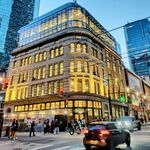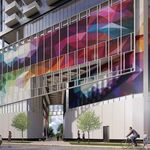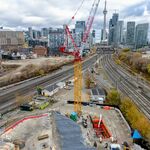Sadly, I agree with this.
If you're a Scarborough resident, the Sheppard and Eglinton LRTs won't do much for you unless you live within walking distance of those lines. The RT refurbishment won't do much either. And the transition is going to be brutal. There is political hay to be made here.
I do believe that Ford should have taken the Stintz compromise.
Ok, the Eglinton LRT has 5km within Scarborough. Sheppard has 12km. The RT with the extension is another 9km of increased and new transit connections. This comes to a total of 26 km of Light Rail Transit for Scarborough alone. With new Transfer nodes at Sheppard Ave and Markham Road, and at Kennedy stations.
This system will create new links to buses in the neighbourhoods of Malvern, Agincourt, Centennial College area, Scarborough Centre, Clairlea, Golden Mile, Highland Creek, Tam O Shanter, Dorset Park, Bendale and even neighbourhoods not directly on the lines such as Rouge Valley and Morningside Heights.
This will serve as the beginning of a paradigm shift for Scarborough. Making it far more attractive than other areas in the GTA for residential and office development. Mississauga will really lose speed to Scarborough in the coming years because it is not building nearly as much transit.
26 km of LRT is not to be downplayed in the Scarborough context. It really changes everything in terms of how the average Scarborough resident who uses transit, gets around. It creates development nodes at very convenient points for redevelopment: Golden Mile, Markham & Sheppard (perfect spot for a more urban Scarborough City Centre), and Kennedy Station. With various connections to GO lines at Kennedy and Agincourt GO stations.
This is not a small feat.





